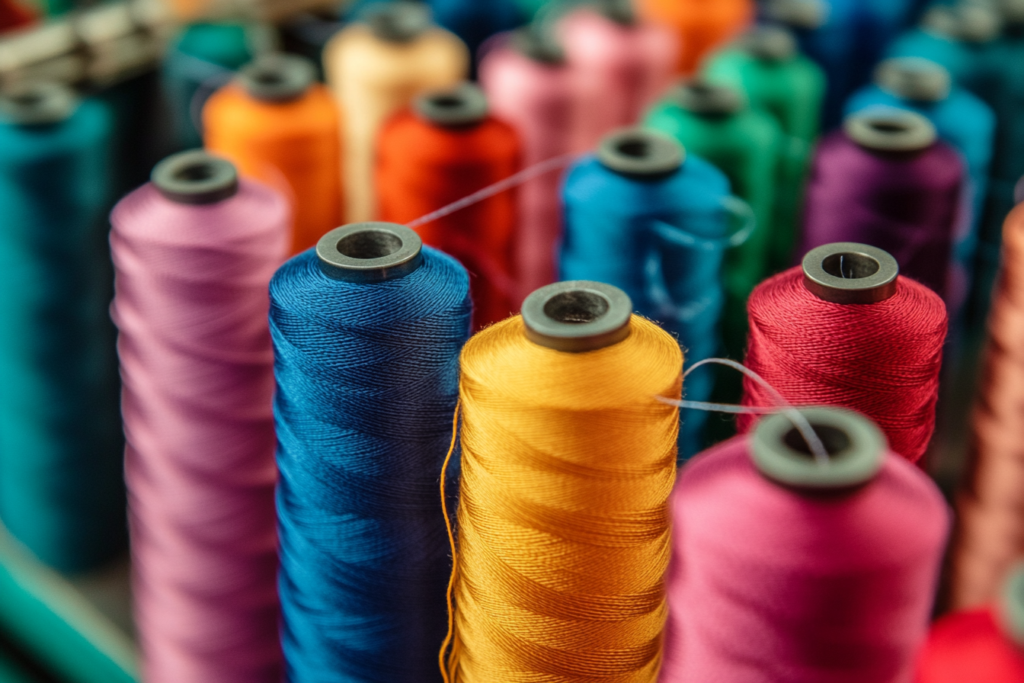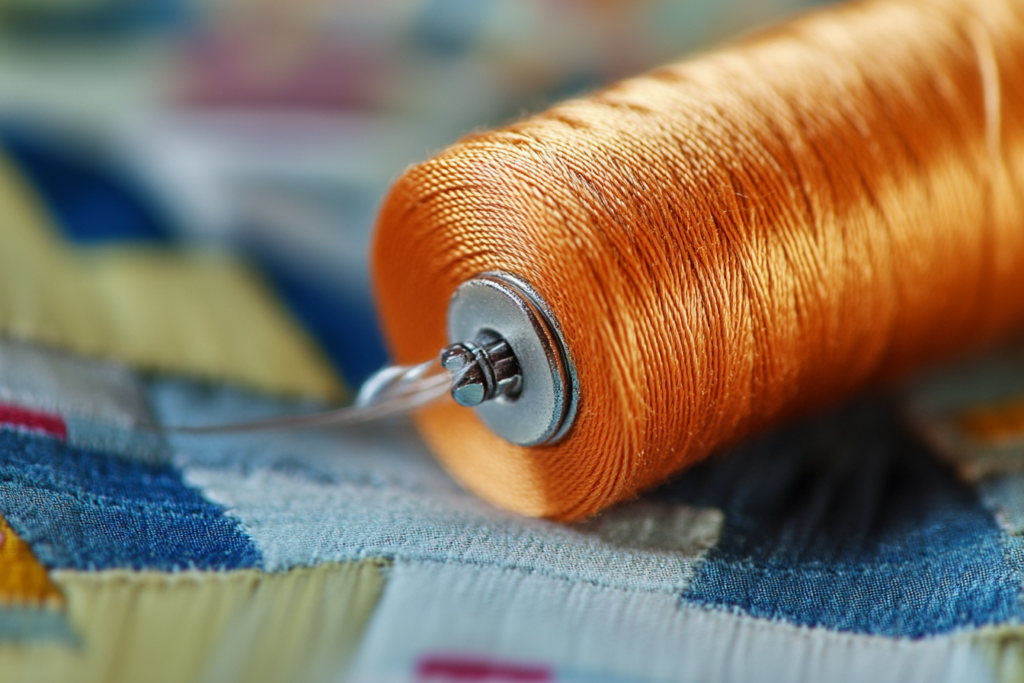Looper Thread: The Chain-Stitch Bobbin Thread Used in Hemming Seams
Meta Description: Looper thread is a chain-shaped bobbin or hemming thread used in hemming seams, ensuring flexibility and durability in sewing. Learn how it works and where it’s used.
What is Looper Thread?
Looper thread is a chain-shaped thread used in hemming seams, commonly found in coverstitch and overlock (serger) machines. Unlike traditional lockstitch bobbin threads, looper threads create stretchable, flexible, and durable seams, making them essential in knitwear, activewear, and hemming applications.
Looper threads form looped stitch structures that do not require a bobbin, making them efficient for fast, continuous sewing in industrial and home garment production.


Key Features of Looper Thread
✔ Forms a Chain-Stitch Loop – Unlike lockstitch sewing, looper threads create a continuous chain structure.
✔ Used in Hemming & Coverstitch Seams – Common in T-shirts, athletic wear, and stretch fabrics.
✔ Allows for Stretch & Flexibility – Essential for knitted garments and activewear.
✔ Found in Overlock & Coverstitch Machines – Used for professional hemming and finishing.
✔ Prevents Fraying & Unraveling – Provides a clean, durable seam finish.
Where is Looper Thread Used?
📌 Hemming Seams on T-Shirts & Knitwear – Used in coverstitch machines for professional hemming.
📌 Stretch Garments & Activewear – Ensures seams remain flexible and do not break under movement.
📌 Overlocking (Serging) Edges – Finishes raw fabric edges to prevent fraying.
📌 Chain-Stitching in Decorative Sewing – Seen in decorative topstitching on casualwear.
📌 Flatlock Seams in Sportswear & Lingerie – Used in seamless garments for a smooth interior finish.
Looper Thread vs. Lockstitch Bobbin Thread
| Feature | Looper Thread | Lockstitch Bobbin Thread |
|---|---|---|
| Stitch Type | Chain-stitch loops | Lockstitch (top and bottom threads interlock) |
| Flexibility | Stretchable | Less stretch |
| Common in | Coverstitch, overlock, flatlock machines | Straight-stitch sewing machines |
| Best For | Knitwear, hemming, activewear | Woven fabrics, structured sewing |
| Unraveling | Can unravel if not secured | More secure, requires cutting |
Looper thread is ideal for stretchy seams, while lockstitch bobbin thread is stronger for structured garments.
Types of Looper Threads
1. Coverstitch Looper Thread
- Used in hemming and topstitching on T-shirts, leggings, and activewear.
- Found in coverstitch machines to create double or triple-needle hems.
2. Overlock Looper Thread
- Used in sergers/overlock machines for seam finishing and edge reinforcement.
- Creates a strong, stretchy, and clean-finished seam.
3. Chain-Stitch Looper Thread
- Found in chain-stitch sewing machines, forming decorative topstitching.
- Used in casualwear and denim for reinforced stitching.
How Looper Thread Works in Sewing Machines
1️⃣ Top needle thread locks into the looper thread to create a stretchable chain-stitch seam.
2️⃣ Looper thread loops around the fabric edge, preventing fraying and unraveling.
3️⃣ Multiple looper threads may be used in coverstitch or overlock machines to create reinforced and decorative hems.
💡 Tip: Always use high-quality polyester looper thread for maximum durability and elasticity.
Why Choose Looper Thread?
✔ Provides a Professional Hem Finish – Used in commercial garment production.
✔ Allows Seams to Stretch & Move – Prevents stitches from breaking under tension.
✔ Prevents Fabric Fraying – Essential for knit and delicate fabrics.
✔ Speeds Up Sewing – Works in continuous stitching without a bobbin.
✔ Versatile for Different Garments – Used in T-shirts, leggings, activewear, and lingerie.
Conclusion: The Essential Role of Looper Thread in Sewing
Looper thread is a fundamental component in stretch sewing, ensuring flexible, durable, and fray-resistant seams. Whether used in coverstitch machines for hemming, overlock machines for seam finishing, or chain-stitch machines for decorative topstitching, it remains a crucial element in modern garment production.
For sewing professionals and fashion manufacturers, looper threads offer the perfect balance of strength, stretch, and efficiency, making them indispensable in knitwear, activewear, and industrial sewing.



